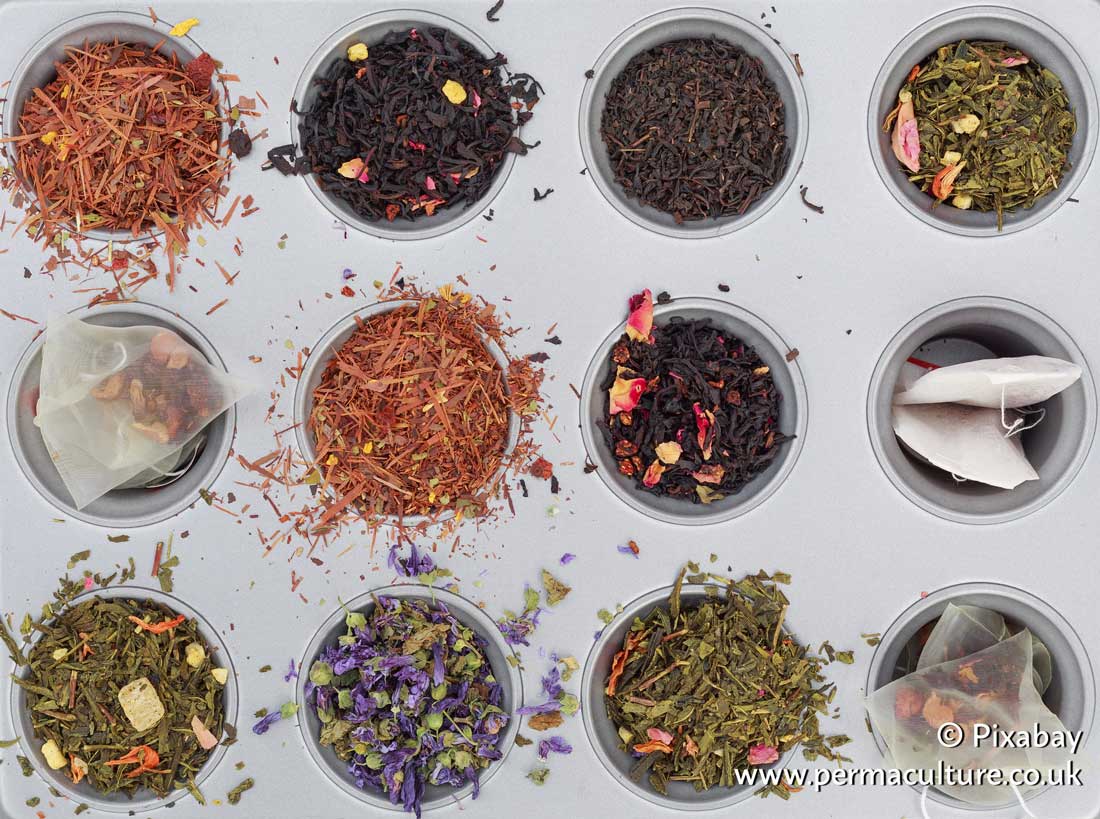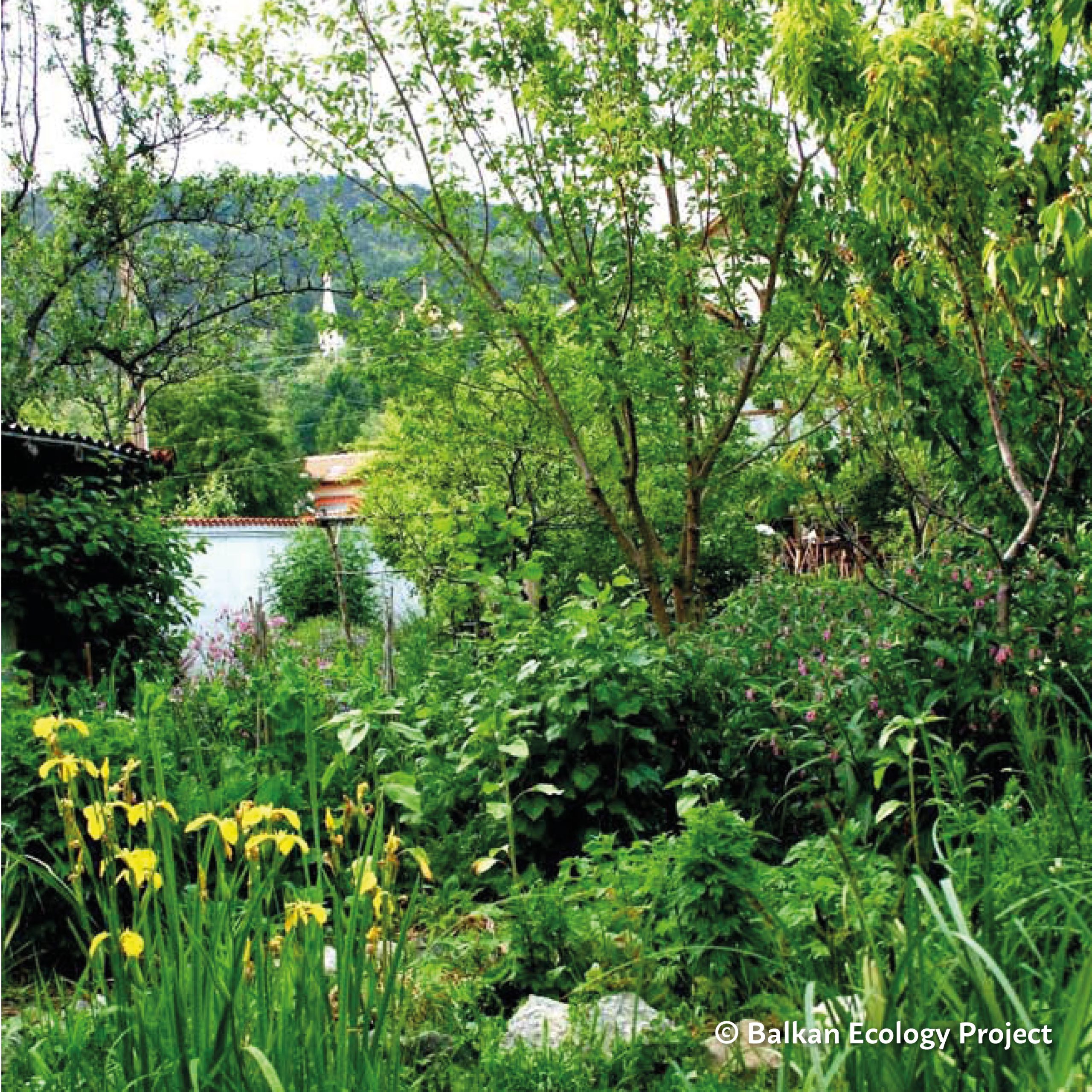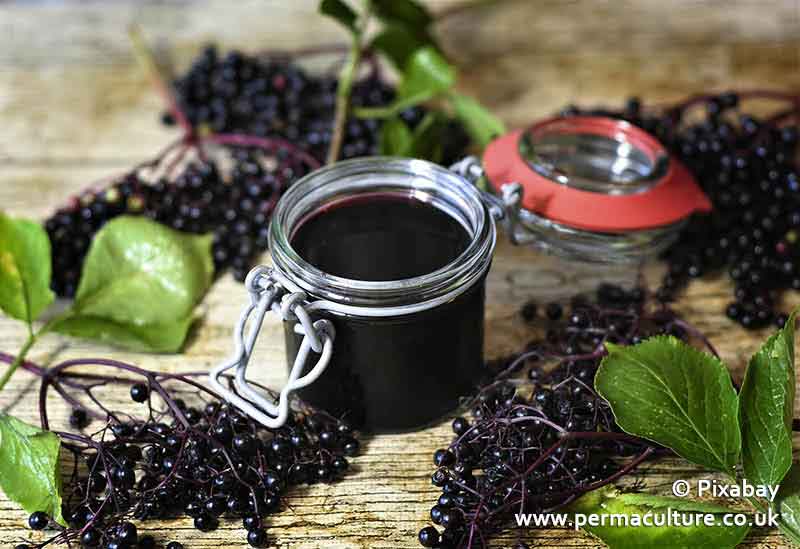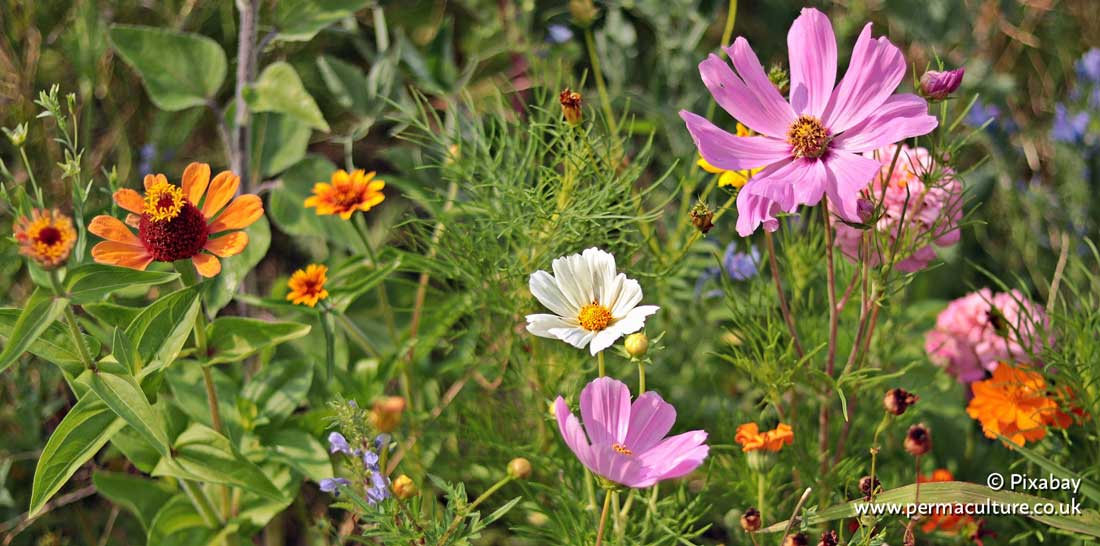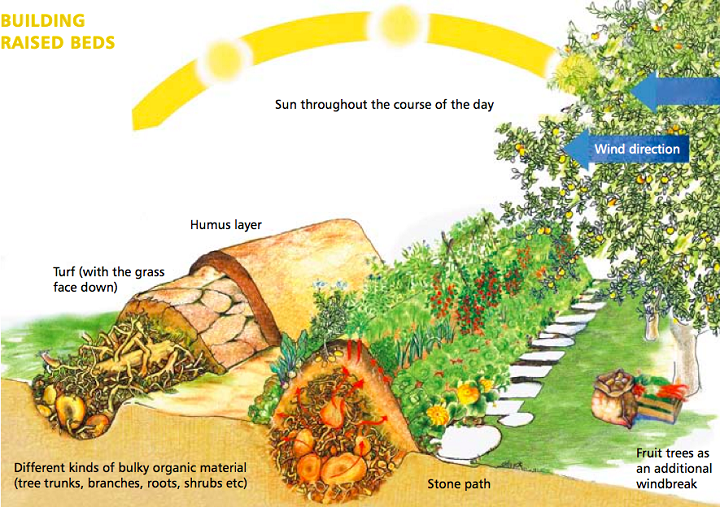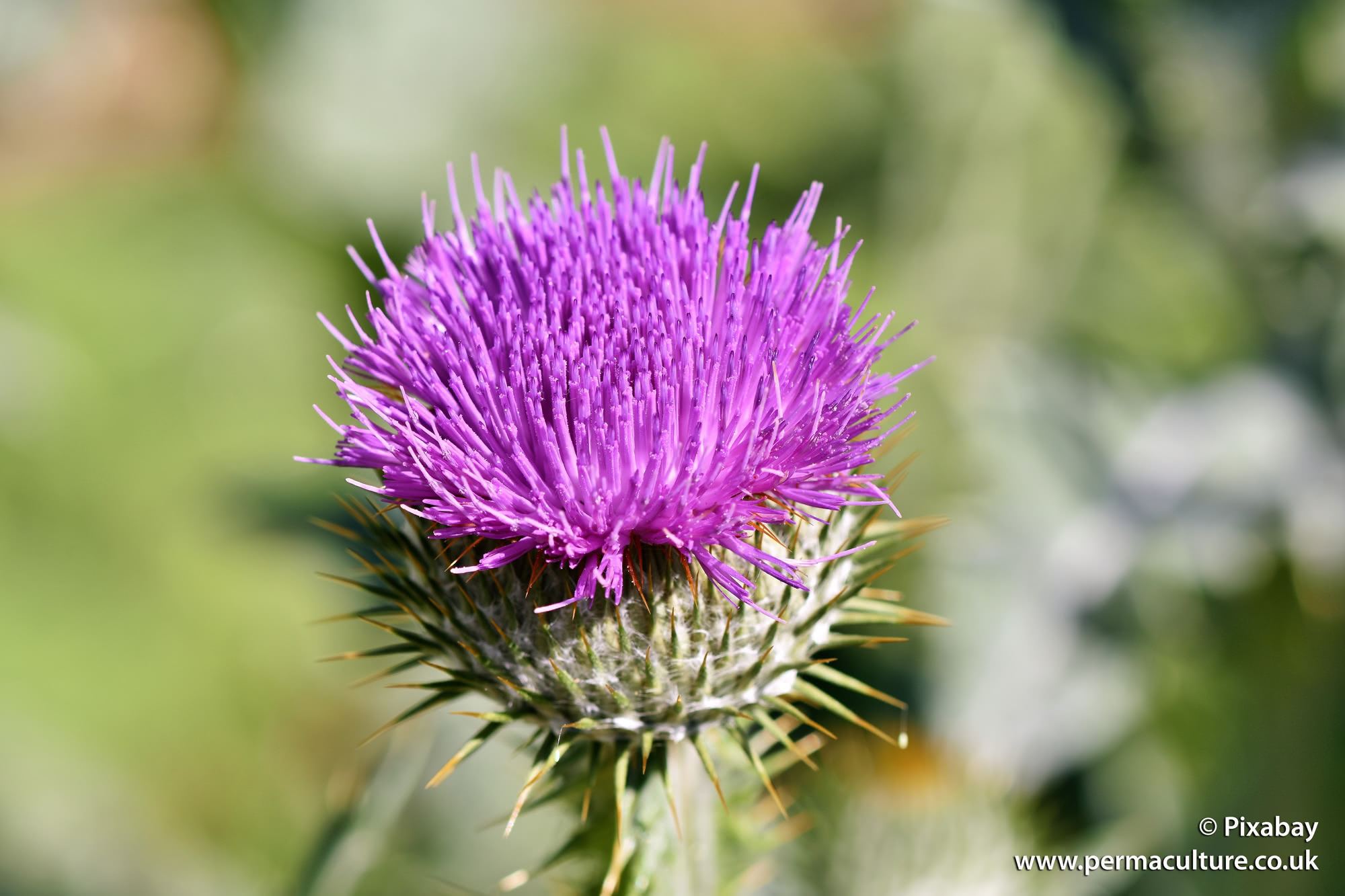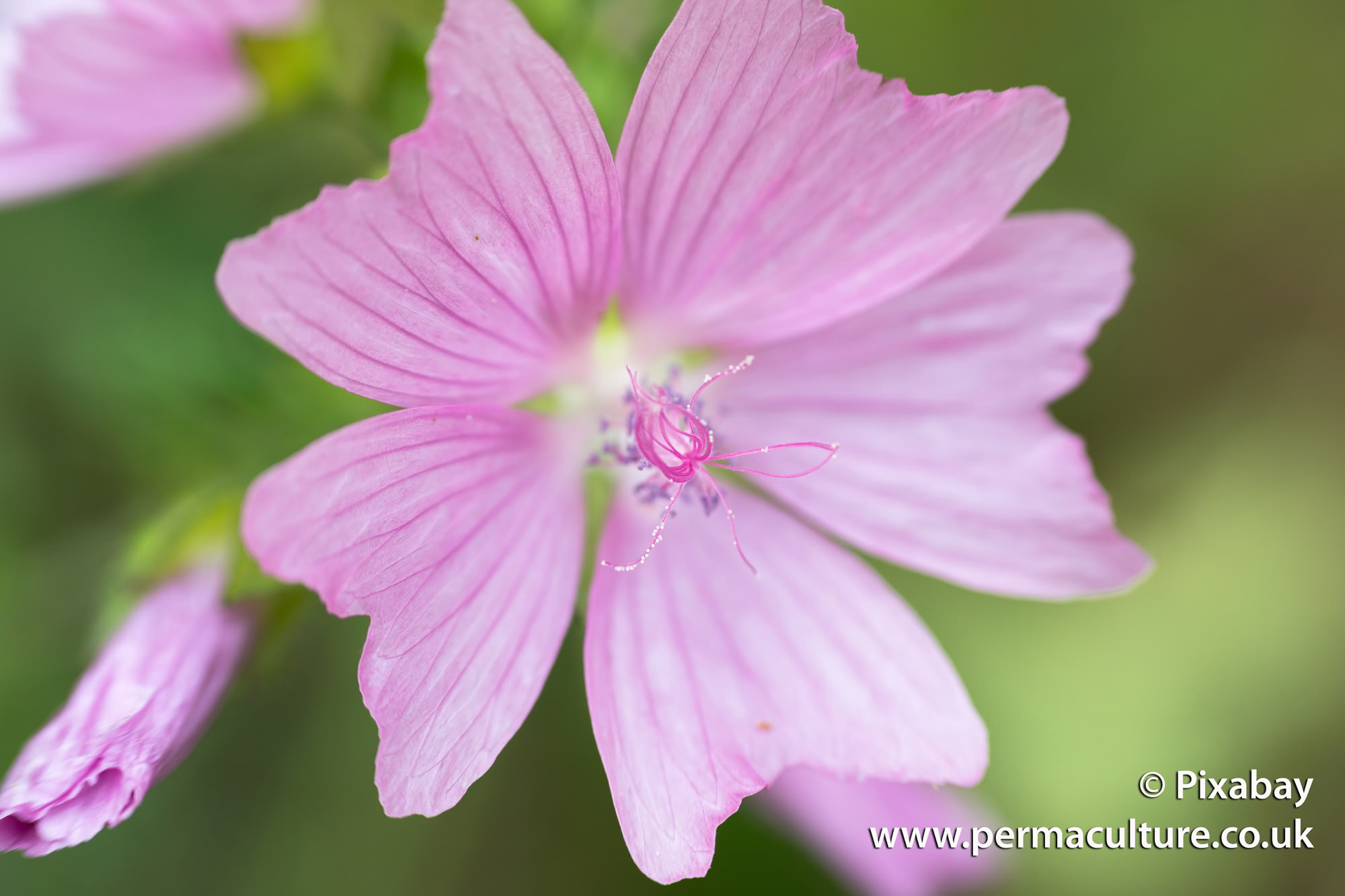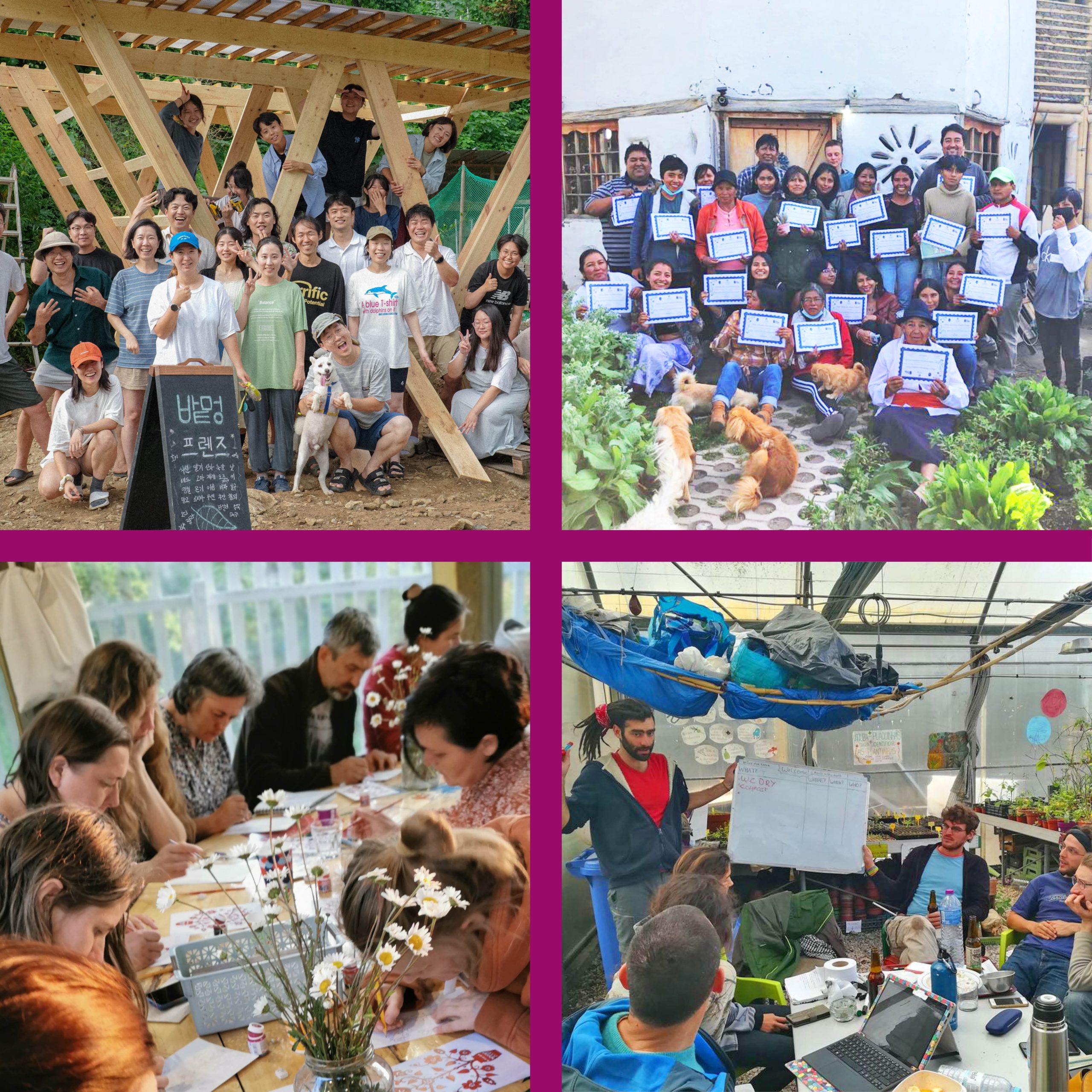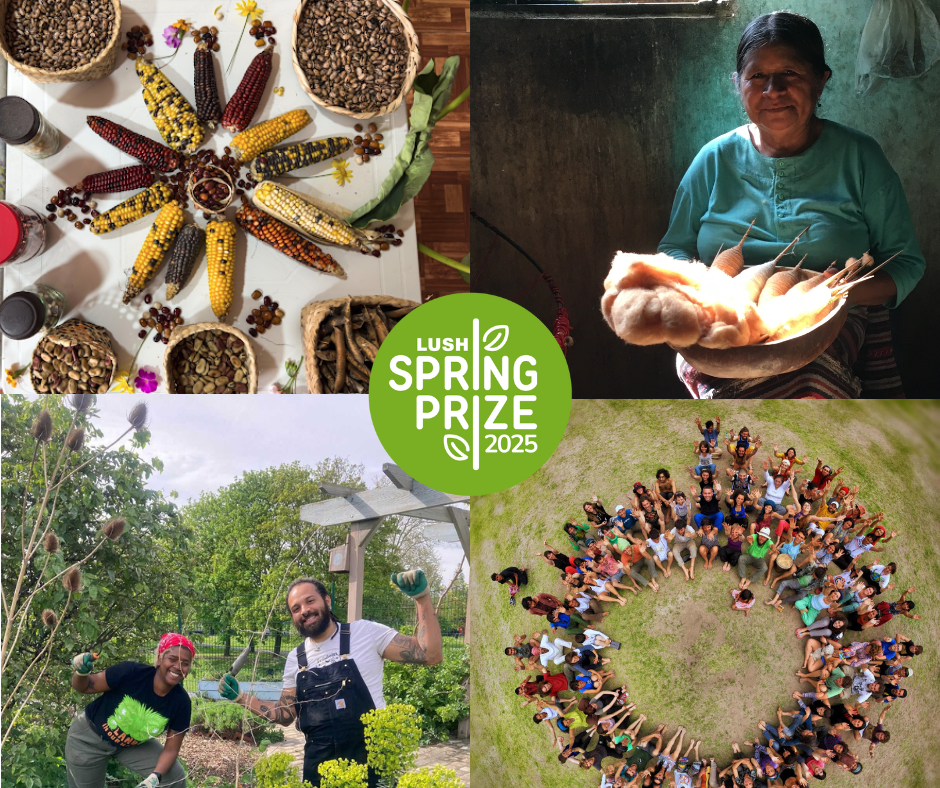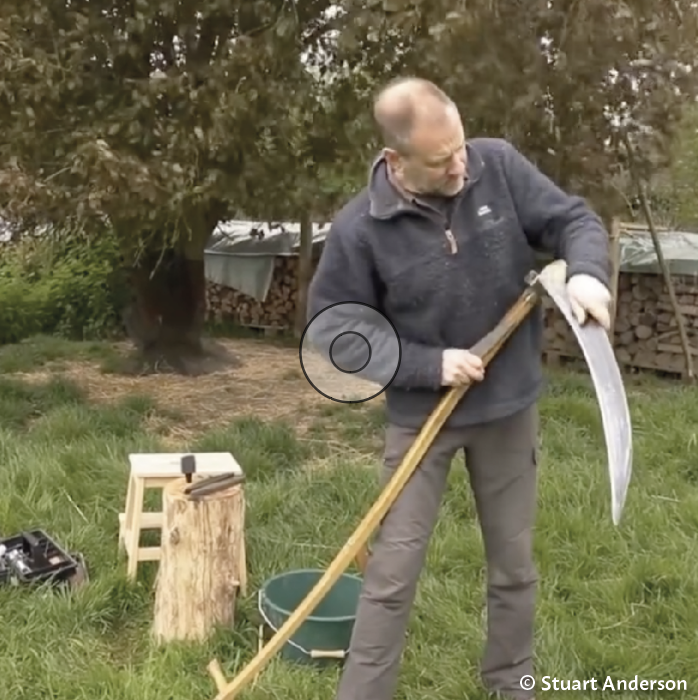We’re extending our Polyculture Project to include experimental perennial polycultures. Our aim is to develop models that are low cost to establish and maintain, can produce healthy affordable nutritious food and will enhance biodiversity.
This spring we’ll be including the Early Polleniser Polyculture as presented here. The design aims to provide pollination support for farms and gardens, yields of nutritious fruits and nuts, valuable nesting sites for endangered native bees, and spectacular flower displays to shake off the winter blues 🙂
As the title suggests the primary purpose of the Early Polleniser Polyculture is to provide an early source of pollen/nectar to a wide diversity of pollinating insects. The majority of the plants in this polyculture bloom when there is little other sources of nectar/pollen available. This encourages pollinating insects in and around our gardens to fulfill their vital role when the crops (particularly fruit trees) start to flower in the early spring.
The polyculture also provides a source of produce in its own right and with proper cultivar selection and plant care, should provide high yields of nutritious fruits and nuts as well as habitat for a wide range of wildlife and pollinators.
Before we go any further I’ll quickly clarify the meaning of the term Polleniser.
A polleniser (sometimes pollenizer, pollinizer or polliniser) is simply a plant that provides pollen. The word pollinator is often mistakenly used instead of polleniser, but a pollinator is the biotic agent that moves the pollen, such as bees, moths, bats, and birds. Bees are thus often referred to as ‘pollinating insects’.
All species included in the polyculture apart from Trifolium repens – white clover, flower during the months of January – March and provide valuable pollen or nectar forage for bees and other pollinators during this period.
| Species | January | February | March |
| Cornus mas Cornelian cherry | X | X | |
| Corylus avellana Hazelnut | X | X | |
| Mahonia aquifolium Oregon grape | X | X | |
| Chaenomeles speciosa Japanese quince | X | X | |
| Alnus cordata Italian alder | X | ||
| Bellis perennis Daisy | X | X | X |
| Primula vulgaris Primrose | X | X | |
| Scilla bifolia Alpine squill | X | X | |
| Galanthus gracilis Snowdrop | X | X | |
| Corydalis bulbosa Crested lark | X | X |
Design goals – As well as pollination support, wildlife habitat and fruit production the design goals include
Light and aspect – All of the plants included tolerate some shade or utilise light when other plants are not in demand of it. The polyculture can therefore be positioned on marginal areas with lower light levels whilst still serving a purpose, however if you would like to obtain maximum pollinator attraction and a higher yield of fruits and nuts, choose a site with at least 6-8 hrs a day and orientate from east-west.
Water – Optimal irrigation is a key to healthy and productive plants. This polyculture is not well suited to semi wetlands and areas with a high water table and will not thrive in very dry areas with no access to irrigation. In dry climates irrigation will be essential but selecting a position for the polyculture that maximises the absorption of rainfall will help considerably and can be achieved by planting on contour and using simple earthworks to keep rain water around the root zones of plants.
N.B. All of the plants are relatively drought tolerant but the fruiting plants will not be high yielding without proper irrigation.
Access – Access from within the polyculture is required for pruning, weeding and harvesting. Two 50cm wide paths running within and parallel to each other provide this access. The periphery of the polyculture should also be accessible from the outside.
Pollinator habitat – Native bees are very important pollinators and are some the most endangered species in our ecosystems. Including habitat for the bees to nest as well as providing good quality forage is essential, accordingly this polyculture includes bee nesting habitat, but having other such habitat around a site is recommended.
Species selection – Our plant selection takes into account the following;
Proximity to crops – Bees will forage where high quality food is available and presumably shorter foraging trips are both safer and more energy-efficient for all bees. Studies show that honeybees – Apis spp. will forage many kms away from nesting sites. Bumblebees – Bombus spp. and most solitary bees will typically forage much shorter distances, according to some reports 100-800m.
Given that there is little consensus within studies of pollinator foraging behaviour, it’s difficult to state how far from the crops and to what density this polyculture should be used to achieve the best pollination results. As a presumptive guide, in areas where suitable forage and nesting habitat is lacking assume a beneficial radius of 100-300m and in areas where there are lots of established early forage and nesting sites assume a beneficial radius of 500-1000m. You can never really have too much early pollinator forage available, but you can have too little. Priorities of budget and time, and the crops that are being grown are other factors that will guide unit quantity and crop proximity decisions.
It’s worth noting that plants are in competition for pollinators attention and for this reason the flowering period of the plants in the polyculture do not overlap significantly with crop plants.
Location/Layout – The polyculture unit presented above can work well as a stand alone unit in any garden. Multiple units of this polyculture can also be used in orchards and farms to provide better pollination coverage for the crops. Below you can find three suggested layouts for the broad scale application of this polyculture 1. Border, 2. Island and 3. Alley.
1. Border layout – The polyculture can be planted on the inside of a fence or outside of a track to form a ‘wrap around’ for the entire orchard/market garden etc. or for subdivision boundaries within a site. Being composed of shade tolerant plants the polyculture will, to some extent, function regardless of aspect. Each unit as pictured above can be repeated to form a border planting.
2. Island layout – The island layout intersperses the units around the site. For already developed sites the islands can be positioned in difficult to access nooks and corners, shady spots and areas of marginal value, or on the periphery of crops that will benefit the most from enhanced pollination.
3. Alley layout – The alley layout entails planting the polycultures in an alley cropping or orchard system at intervals among the main crops. For example, an apple and pear orchard may have every 10th row composed of early polleniser units.
So let’s take a closer look at the species involved and the management and maintenance tasks required for this polyculture
I’ve divided the polyculture into five main components based on the purpose that each component serves.
The fruiting trees and shrubs component include Cornus mas and Corylus avellana in the upper canopy, and Chaenomeles speciosa and Mahonia japonica in the lower canopy/shrub layer and are the main productive units in the guild. With good cultivar selection these plants can provide yields of excellent fruits and nuts.
| Species | Family | Layer | Cultivars | USDA hardiness | Soil pH | Space (HxW) | Light | Root behaviour |
| Cornus mas Cornelian cherry | Cornaceae | Canopy | available | 5 | Acid Neutral Alkaline | 5m x 5m | Full sun Med shade | Reticulated root ball with deep taproot |
| Corylus avellana Hazelnut | Betulaceae | Canopy | available | 4-8 | Acid Neutral Alkaline | 6m x 3m | Full sun Med shade | A spreading root system associated with spreading basal growth |
| Mahonia aquifolium Oregon grape | Berberidaceae | Shrub | n/a | 5 | Acid Neutral Alkaline | 2m x 1.5m | Full sun Med shade Full shade | Deep anchor roots Suckers freely |
| Chaenomeles speciosa Japanese quince | Rosaceae | Shrub | available | 5 | Acid Neutral Alkaline | 3m x 5m | Full sun Med shade Full shade | Roots extending deep into the subsoil Suckers freely |
Species overview – Cornus mas is one of my favorite plants. The hum of the bees under our Cornus mas trees on a sunny day in late winter is just one of the reasons I love this plant. It’s a medium sized hardy tree and an excellent polleniser producing a bounty of flowers rich in nectar from Feb – March. The plant is self-fertile and the flowers go on to form wonderful grape shaped fruits in late summer delicious when fully ripe.
Uses – Excellent fruit when ripe and great for making cordial or syrups. Nutritional analysis indicates that Cornelian cherry juices are rich in various essential elements and might be considered as an important dietary mineral supplementation. There are some fabulous cultivars available with larger sweeter fruit.
The seeds can be roasted, ground into a powder and used as a coffee substitute and a small amount of edible oil can be extracted from the seed. A dye is obtained from the bark and the leaves are a good source of tannin. The wood is very hard, it is highly valued by turners and has a history of use for tools, machine parts, etc. We use the twigs to feed rabbits and goats all year around.
Biodiversity – One of the earliest trees to flower, attracting a wide range of pollen and nectar feeding invertebrates from Feb – March. We often see great tits, blue tits and long tailed tits in our trees during the winter. I’m not sure whether they are feeding on the buds, dried fruit or perhaps the invertebrates sheltering under the bark and crevices.
For more on this plant see our Cornelian Cherry plant profile
Species overview – A fast growing deciduous shrub with rounded leaves, producing yellow male catkins in the early spring followed by delicious edible nuts in the autumn. Typically reaching 3-8m tall but may reach 15m.
Uses – One of the finest temperate nuts eaten roasted or raw. The wood from hazel is also commonly used. Soft, easy to split but not very durable it is mainly used for small items of furniture, hurdles, wattles, basketry, pea sticks etc. The tree is very suitable for coppice. The twigs can be used to feed rabbits and goats all year around. The nuts also contain 65% of a non-drying oil that can be used in paints, cosmetics etc. The finely ground seeds are used as an ingredient of face masks in cosmetics.
Biodiversity – The pollen-bearing catkins can be available to pollinators from as early as late Jan – late March. Hazel leaves provide food for the caterpillars of many moths. Hazel nuts are used by dormice to fatten up for hibernation and in spring the leaves are a good source of food for caterpillars, which dormice also eat. Hazel nuts are also eaten by woodpeckers, nuthatches, tits, wood pigeons, jays and a number of small mammals.
For more on this plant see our Hazelnut plant profile . We also have a range of excellent cultivars available.
Species overview – A thorny deciduous or semi-evergreen shrub native to eastern Asia, usually growing to about 2m tall and generally exhibiting a rounded outline, but is somewhat variable in form. The plants establish a very dense crown with a tangled jumble of branches which are either spiny or with spurs. The flowers come before the leaves and are usually red, but may be white or pink. The fruit is fragrant and looks similar to a small apple although some cultivars have much larger pearish shaped fruits. The leaves do not change colour in the autumn.
Uses – The fruits don’t make great eating and are generally extremely hard but following a cold spell I found the Japanese Quince softened enough to squeeze like a lemon, and the juice being very acidic makes them an excellent alternative to lemon juice. Another plus for this fruit is that they have a delicious and somewhat addictive aroma that lingers around for a few days resembling that of pineapples, lemons and vanilla. We leave the fruits in the car or around a room to act as a natural air freshener.
Biodiversity – The flowers are attractive to a wide range of pollen and nectar feeding invertebrates from March – April, sometimes in February. With regular pruning the shrubs become dense providing suitable nesting habitat for birds such as wren – Troglodytes troglodytes, chiffchaff – Phylloscopus collybita and robin – Erithacus rubecula. The diets of these birds include some common vegetable pests and can help keep pest populations in check.
For more on Chaeonomeles spp. see our previous blog article here.
Species overview – A great little shade tolerant evergreen shrub growing to 1m tall by 1.5m wide that can cope with most soils and thrive in shady spots where many other plants succumb. It is resistant to summer drought and tolerates wind. The plant produces dense clusters of yellow flowers in early spring, followed by dark bluish-black berries. Once the plant gets going it’s very vigorous and produces many suckers.
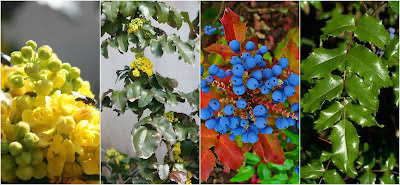
Uses – The small purplish-black fruits can be used to make jelly or juice that can be fermented to make wine. The inner bark of the larger stems and roots of Oregon-grape yield a yellow dye; the berries give purple dye. The holly-like evergreen leaves are sometimes used by florists to add to bouquets. It makes a great under story shrub for densely shaded areas.
Biodiversity – Excellent early-flowering nectar source for bees and bumblebees. The nectar and pollen may be taken by blackcaps, blue tits and house sparrows. Berries are eaten by blackbirds and mistle thrushes. Good caterpillar food plant.
For more on this plant see our Mahonia aquifolium plant profile
The table below indicates the quantity of trees and shrubs per unit and some information on how to establish and maintain this component of the polyculture.
| Species | Produce | Quantity per unit | Yield at maturity | Maintenance | Harvest period | Establishing |
| Cornus mas | Fruit | 1 plant | 50+kg | Prune- Lift lower branches to allow light in bottom layers | Aug-Sep | Planting can take place from October to March Apply top dressing of compost and mulch Keep area around plants weed free for first two years Irrigate when dry |
| Corylus avellana | Nut | 1 plant | 5 – 10kg | Remove basal growth | Aug-Sep | |
| Chaenomeles speciosa | Fruit | 2 plants | 2-3kg | Prune to shape, Cut back suckers and use for mulch | Sep-Oct | |
| Mahonia japonica | Fruit | 2 plants | 500g | Remove basal growth and use for mulch | Aug-Sep |
The ground cover plants include Primula vulgaris and Bellis perennis, both herbaceous perennials with low growing and spreading habits that over time should form large patches of cover under and around the shrubs and trees. A ground cover can prevent unwanted plants from moving in and protects the soil from erosion.
| Species | Family | Layer | Cultivars | USDA hardiness | Soil pH | Space (HxW) | Light | Root behaviour |
| Primula vulgaris Primrose | Primulaceae | Ground | n/a | 5 | Acid Neutral Alkaline | 0.3m x 0.3m | Full sun Light shade | Clump forming and slowly spreading |
| Bellis perennis Daisy | Asteraceae or Compositae | Ground | available | 4 | Acid Neutral Alkaline | 0.2m x 0.2m | Full sun Light shade | Shallow rooted, Rhizomatous |
Species overview – A herbaceous perennial, loving cool, damp banks and glades, and thriving in coppice woodland where they can form a stunningly attractive carpet. They like wet soil best, with lots of shade in the summer. The drier and hotter the climate, the more they need shade. Summer drought is not a big problem as long as they get plenty of moisture in autumn and the first part of the year.
Uses – Both flowers and leaves are edible, the flavour ranging between mild lettuce and more bitter salad greens. The leaves can also be used for tea, and the young flowers can be made into primrose wine.
Biodiversity – Primroses are one of the earliest spring flowers. They may be found flowering in warm sheltered nooks as early as the end of January, although most flower from March to May. Because they flower so early in the year, they provide a vital source of nectar at a time when there are few other flowers around for insects to feed on such as adult Brimstone butterflies which have hibernated over the winter and often emerge on warmer winter days.
For more on this plant see our Primula vulgaris plant profile
Species overview – An abundant, small, low-lying herbaceous perennial plant with white flowers with yellow centres and pink flecks, that appear most of the year, except in freezing conditions. The plants habitually colonise lawns and grassland.
Uses – May be used as a potherb and young leaves can be eaten raw in salads or cooked, noting that the leaves become increasingly astringent with age. Flower buds and petals can be eaten raw in sandwiches, soups and salads. It is also used as a tea and as a vitamin supplement. Medicinally, the plant is known for its healing properties and can be used on small wounds, sores and scratches to speed up the healing process. The spreading habit of the plant makes it a good ground cover option.
Biodiversity – A valuable addition to grassland areas managed for wildflowers and wildlife attracting a good deal of attention from pollinators when little other forage is available.
For more on this plant see our Bellis perennis plant profile
The table below indicates the quantity ground cover plants per unit and some information on how to establish and maintain this component of the polyculture.
| Species | Produce | Quantity per unit | Yield at maturity | Maintenance | Harvest period | Establishing |
| Bellis perennis | Edible flowers | 10 plants | n/a | n/a | All year | Planting can take place from September to June Keep weed free for the first year – Irrigate when dry |
| Primula vulgaris | Edible flowers | 10 plants | n/a | Divide when crowded | Feb – April |
The early flowering bulbs flower in January – February taking advantage of the light pouring through the leafless tree and shrub canopy. These plants offer nectar and pollen rewards to pollinators venturing out during the warmer late winter days. The bulbs also serve to retain nutrients in the rhizosphere, the top 10-20cm of soil where most plants feed and the majority of the microbiological activity takes place. They do so by up taking nutrients that would otherwise wash through the soil with the winter rains and snow melt, and fixing these nutrients to their leaf and flowering tissue. When the plants wither and decompose in the spring just when the other plants awaken from winter dormancy, the tissue is assimilated back into the rhizosphere, eventually to become available to the other plants. You can consider these plants a nutrient store preventing minerals leaching out of the soil and locking them away for when they are needed later. We’ve selected three native plants commonly found in the woodlands and hedgerows in our area.
| Species | Family | Layer | Cultivars | USDA hardiness | Soil pH | Space (HxW) | Light | Root behaviour |
| Scilla bifolia Alpine squill | Asparagaceae | Underground | available | 5 | Acid Neutral Alkaline | 0.2m x 0.1m | Full Sun (winter) | Short fleshy root systems – good for the early winter utilisation of nutrients in the soil that would otherwise wash away with snow melt and rains |
| Galanthus gracilis Snowdrop | Amaryllidaceae | Underground | available | 5 | Acid Neutral Alkaline | 0.2m x 0.1m | Full sun (winter) | |
| Corydalis bulbosa Crested lark | Papaveraceae | Underground | available | 5 | Acid Neutral Alkaline | 0.2m x 0.1m | Full sun (winter) |
Species overview – A herbaceous perennial growing from an underground bulb. A native to Europe and western Russia south through Turkey to Syria. The plant is found in shady places, woods of beech or deciduous trees, and mountain grasslands.
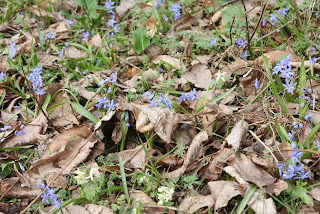
Scilla bifolia – Alpine squill growing through the mulch on the forest floor
Uses – I could not find much info on this elegant little beauty. It grows all over the woodlands in our region and we inherited many patches in our garden perhaps cultivated from the wild by previous owners or remnants from the wild past of the land. I did find one report stating that ingestion may cause severe discomfort so I doubt they taste as good as they look 🙂
Biodiversity – Early source of nectar for pollinators when little else is in flower
For more on this plant see our Scilla bifolia plant profile.
Species overview – Early spring flowering bulbs, even sometimes emerging through the snow in the late winter, providing a very welcome source of food for bees and other pollinators. Popular as an ornamental plant, snowdrops are often cultivated in gardens and parks but are also a great choice for light or deep woodland ground cover.
Uses – The plant has insecticidal properties and can be used against pests in the orders Coleoptera (beetles), Lepidoptera (butterflies and moths) and Hemiptera (true bugs including aphids and leafhoppers). Common snowdrop contains an alkaloid, galanthamine, which has been approved for use in the management of Alzheimer’s disease in a number of countries. The plant and bulb are poisonous to humans and should not be consumed.
Biodiversity – Snowdrops are pollinated by bees during February and March. The miniature white seeds produce substances which attract ants. These insects collect and transfer seed via underground tunnels.
For more on this plant see our Galanthus gracilis plant profile
Species overview – A subtle but stunningly beautiful bulbous perennial, blooming from February. A spring ephemeral with foliage that appears in spring and dies down to its tuberous rootstock in summer. The plant spreads and forms a pretty white to purple carpet.
Uses – A good choice for borders, under planting or the woodland garden. Fumewort has been used as a painkiller in Chinese medicine for over 1,000 year. The root or tuber is used internally as a sedative for insomnia and as a stimulant and painkiller, especially in painful menstruation or traumatic injury. Caution should be exercised when using this plant for medicinal purposes as the plant is reportedly toxic.
Biodiversity – A reliable and early source of food for bees. Corydalis spp. are used as food plants by the larvae of some Lepidoptera species (butterflies), especially the clouded Apollo.
For more on this plant see our Corydalis bulbosa plant profile
The table below indicates the quantity of early flowering bulbs per unit and some information on how to establish and maintain this component of the polyculture.
| Species | Produce | Quantity per unit | Yield at maturity | Maintenance | Harvest period | Establishing |
| Scilla bifolia | Flowers | 30 bulbs | n/a | Divide when crowded | n/a | Plant in spring or autumn 10-12cm deep |
| Galanthus gracilis | Flowers | 30 bulbs | n/a | n/a | Plant in spring or autumn 10-12cm deep | |
| Corydalis bulbosa | Flowers | 30 bulbs | n/a | n/a | Plant in spring or autumn 10-12cm deep |
The fertility plants include two very different nitrogen fixing species. The first of these is Alnus cordata, a tree that can grow to 25m high but should be maintained as a small shrub within this polyculture. Trimmed each autumn, the biomass can be applied to the base of the neighbouring fruit bearing plants. The second plant Trifolium repens is creeping herbaceous perennial that can be sown into the pathways, mowed annually and applied to the fruiting plants as mulch.
For more on nitrogen fixing plants and how they work see our previous post here.
| Species | Family | Layer | Cultivars | USDA hardiness | Soil pH | Space (HxW) | Light | Root behaviour |
| Alnus cordata Italian alder | Betulaceae | Shrub | n/a | 5 | Acid Neutral Alkaline | 25m x 8m | Full sun Med shade | Deep taproot with dense subsidiary rootlets |
| Trifolium repens White clover | Fabaceae | Ground | available | 5 | Acid Neutral Alkaline | 0.1m x 1m | Full sun Light shade | Stoloniferous – Rooting from creeping stems above ground |
Species overview – A medium-sized tree growing up to 25m tall. The leaves are deciduous but with a very long season in leaf, from April to December. Like other members of Alnus genus, it is able to fix nitrogen from the air. It thrives on much drier soils than most other alders, and grows rapidly even under very unfavourable circumstances, which renders it extremely valuable for landscape planting on poor soils and heavily compacted sites.
Uses – The tree is sometimes used as an ornamental in large gardens and parks for its majestic appearance and fast growth, or as a road-side or street tree, because it establishes rapidly in exposed positions, is reasonably compact and tolerates dry conditions as well as a dusty atmosphere. It is also commonly grown as a windbreak. Its timber can be used for construction purposes in wet conditions, since alder wood is virtually resistant to decay under water. Its poles have been used as foundation poles for the houses and bridges of Venice. It can also be used for firewood. The plant makes a medium to large bonsai, a quick grower it responds well to pruning with branches ramifying well and leaf size reducing quite rapidly.
Biodiversity – Alnus spp. shed pollen from catkins in late winter and early spring some of which bees and other pollinators feed upon.
Nitrogen fixing potential – Alnus cordata is not listed on the USDA database but others species in this genus are classified by USDA as being a HIGH Nitrogen fixer with estimated yields of +160lbs/acre or +72kg/4050m² or 0.018g /m2.
For more on this plant see our Alnus cordata plant profile
Species overview – White clover is a dwarf, prostrate, mat-forming perennial that can spread via stems which freely root along the ground at the nodes. Easily grown in average, medium, well-drained soils in full sun to part shade. Prefers moist soils in light shade, but tolerates full sun and moderately dry soils.
Uses – White clover has been described as the most important forage legume of the temperate zones. Besides making an excellent forage crop for livestock, clovers are a valuable survival food: they are high in proteins and although not easy for humans to digest raw, this is easily fixed by boiling the harvested plants for 5–10 minutes. Dried flower heads and seedpods can also be ground up into a nutritious flour and mixed with other foods, or can be steeped into an herbal tea. The plant’s ability to spread aggressively by creeping stems makes it good for ground cover and its tolerance of foot traffic make this my favourite plant for pathways.
Biodiversity – The plants provide a source of nectar and pollen for a number of native bees as well as the honey bee.
Nitrogen fixing potential – The species is classified by USDA as being a HIGH Nitrogen fixer with estimated yields of +160lbs/acre or +72kg/4050m² or 0.018g /m2.
Other sources state up to 545 kg of N per hectare per year is possible.
For more on this plant see our Trifolium repens plant profile.
The table below indicates the quantity of fertility plants per unit and some information on how to establish and maintain this component of the polyculture.
| Species | Produce | Quantity per unit | Yield at maturity | Maintenance | Harvest period | Establishing |
| Alnus cordata | Biomass/ N input | 4 plants | n/a | Reduce by 50% in the 2nd spring and apply as mulch Thereafter trim regrowth every autumn and apply as mulch | Planting can take place from October to March Keep weed free for first two years – Irrigate when dry | |
| Trifolium repens | N Input – 0.014g /m2 per year | 12g | n/a | Mow in the autumn | n/a | Sow 1.5 g /m2 in the spring onto tilled pathways |
Pollinators provide an important link in our ecosystems by moving pollen between flowers and ensuring the growth of seeds and fruits. Native bees form the most important group of pollinators and as I’m sure you’ve heard they’re currently threatened by changes in our landscapes, especially the loss of nesting sites. The general desire for neatness results in the removal of bare ground, dead trees, and untidy corners of rough grass – all important nesting sites for bees. Our polyculture design takes this into account and includes some important nesting habitats for the bees, namely logs, bare earth patches and rock crevices.
Water is also necessary for pollinators and including a small pond will be very beneficial, even essential if the site does not have a water source nearby. For this reason we’ve included a small tyre pond in the centre of the polyculture.
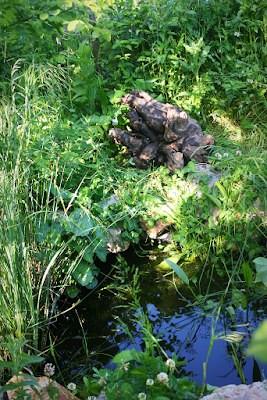
Tyre pond and log from our Market Garden
Wildlife habitat – Management
| Item | Function | Quantity per unit | Maintenance | Establishing |
| Bird nesting box | Pest control | 1 | Replace when worn | Add when Cornus mas is large enough fix a box to the main trunk. 1-3m from ground. |
| Tyre pond | Water | 1 | Thin out aquatic plants and clear out dead organic matter annually | Dig a 1.10m diameter hole to fit a car tyre, line tyre, add plants and water, line boundary with rocks and plant local aquatic species into the pond. |
| Rock border with sand infill | Bee nesting sites Reptile basking | 1 | Pull weeds from between cracks to allow access to nesting sites | Lay a 50cm wide strip of landscapers mat around the edge of the pond and cover with rocks of various sizes. Include large flat surfaced rocks. Fill the crevices in the rocks with sand. |
| Logs | Bee nesting | 1 | Replace when decomposed | Place old logs in a sunny area with a few upright, like dead trees, to ensure some deadwood habitat stays dry. Drill holes on the southeast side of the log. |
| Bare earth | Bee nesting | 1m2 | Move 1m2 mat each year | Lay a 50cm x 50cm dark, heavy mat on a patch on ground away from the access routes. Move the mat to a new location when the vegetation has died back, and lightly till the soil. |
The plants and habitat in this polyculture can be assembled in many ways. You can consider the plants and habitat listed above as a ‘palette’ from which you can create many forms.
Here are a few variations on the design for where space is limited.
The first design is a 20m2 circle with all of the plantings fitting under the mature canopy of the Cornus mas. It’s very similar to the first early polleniser polyculture I designed during the development of a 5 ha polyculture/permaculture orchard I was working on a few years ago. The plan was to include some early forage perennials and habitat for bees and other pollinators to support the fruit trees and shrubs, and I was pondering how best to integrate these plants. As the design developed it turned out there were odd spaces where the tree alleys converged with access tracks and the headlands. The spaces were not big enough for fruit trees to fit without blocking access. They were quite evenly dispersed across the site and seemed perfect for placing the polyculture.
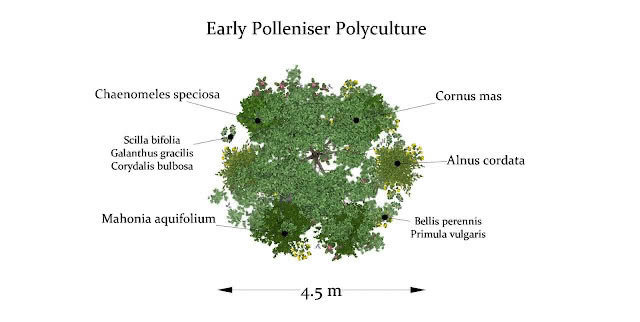
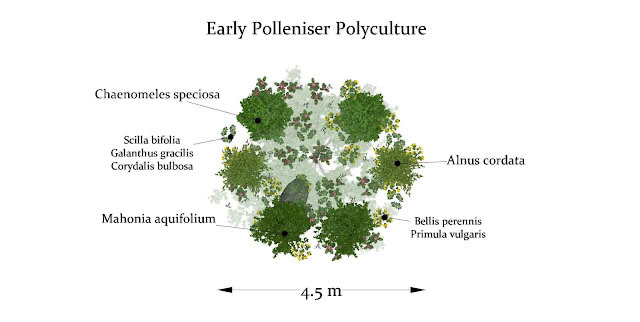
Under plantings of the Early Polleniser Design – 20m2
The plants can also be planted denser for hedge row plantings and sub division hedges. The following planting scheme would work well for hedging with a 20 cm strip of flowering bulbs and ground cover running parallel with the hedge. The Cornelian Cherry and Hazelnuts may be left to grow out.
For the full blog post, visit: http://balkanecologyproject.blogspot.co.uk/2017/01/the-early-polleniser-polyculture.html
Paul runs the Balkan Ecology Project in Bulgaria with his wife Sophie Roberts and their two boys Dylan and Archie.
